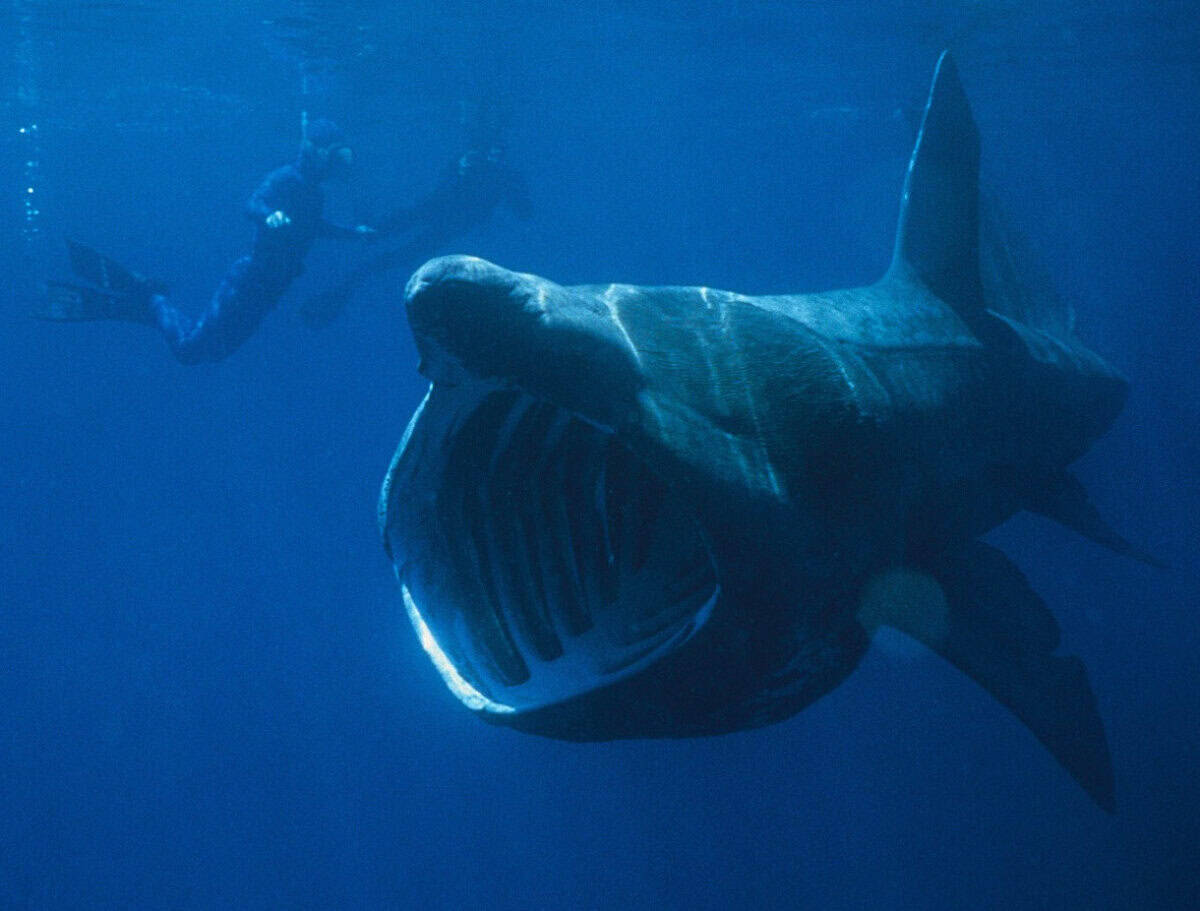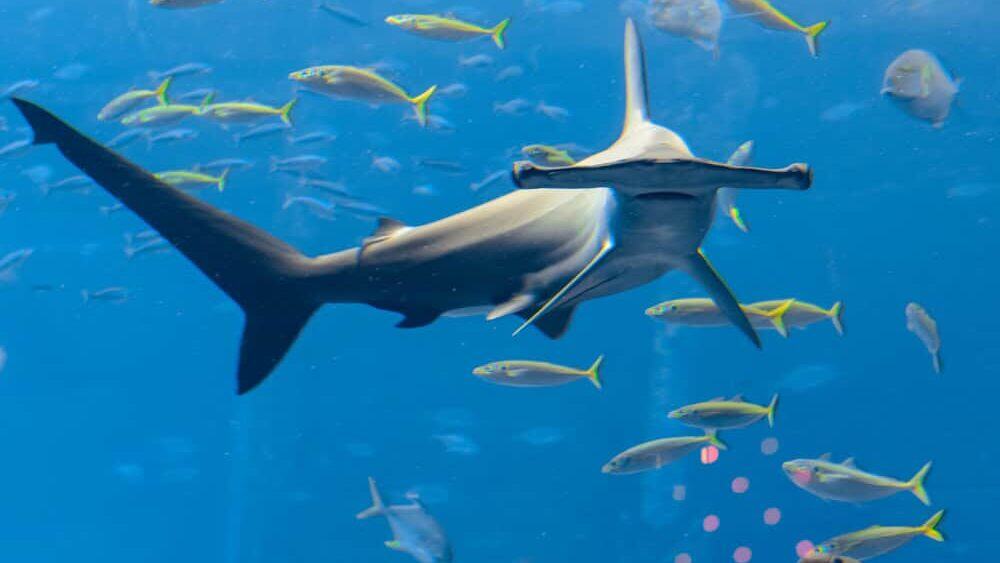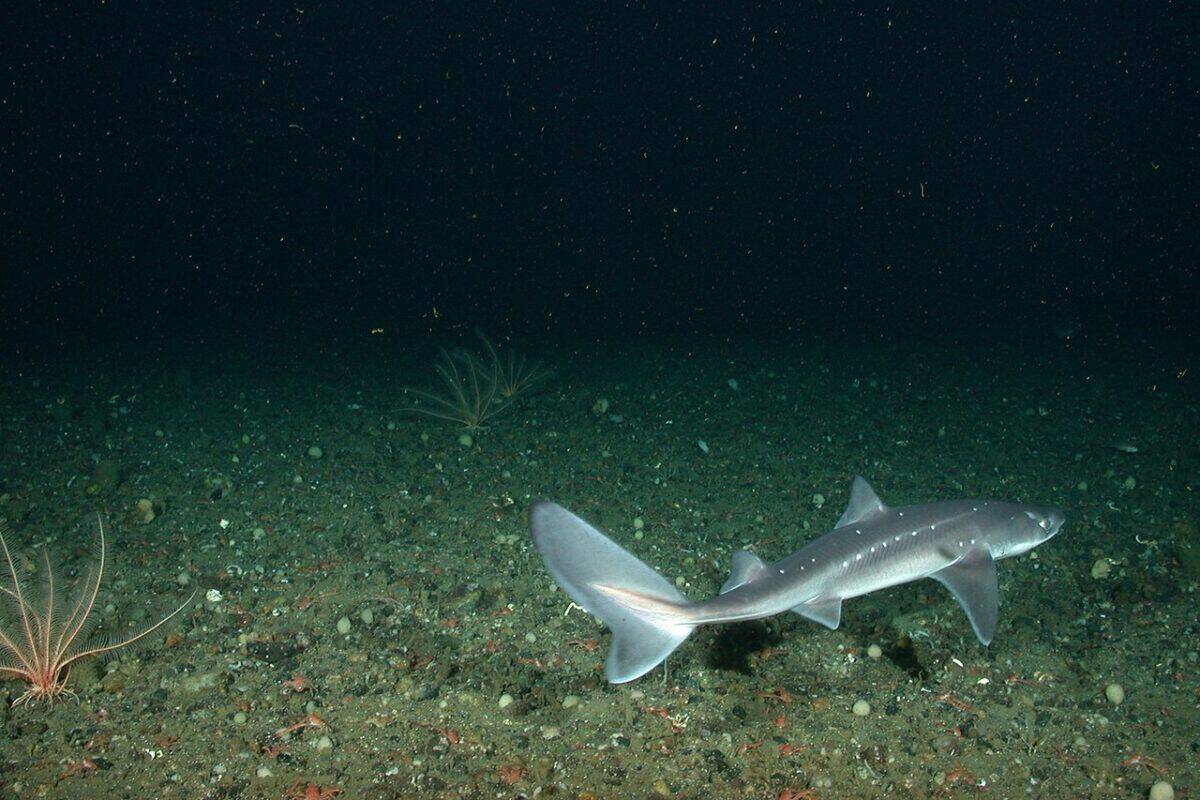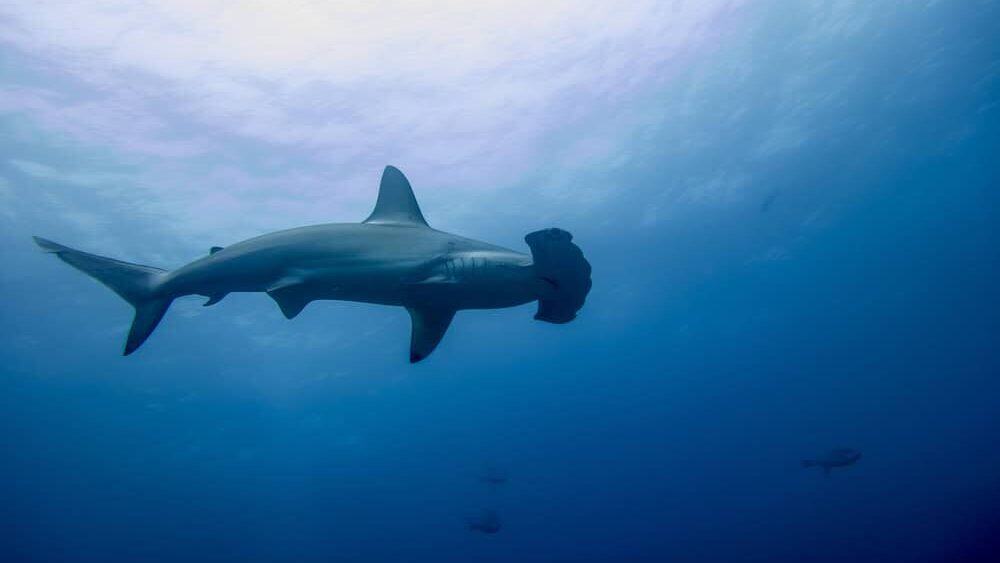Sharks have long captivated our imagination with their powerful presence in the world’s oceans. While popular culture often portrays these remarkable creatures as solitary hunters prowling the depths in isolation, the social behaviors of sharks are actually far more complex and varied than most people realize. Some species do indeed prefer a solitary existence, patrolling vast territories alone and only coming together briefly for mating. Others, however, have evolved surprisingly sophisticated social structures, traveling in groups called schools or shoals that can serve multiple purposes from hunting to protection.
Understanding the social preferences of different shark species provides valuable insight into their ecological roles and evolutionary adaptations. This knowledge is not only fascinating from a scientific perspective but also critical for conservation efforts aimed at protecting these often misunderstood predators. In this article, we’ll explore ten shark species that typically prefer solitude and three that exhibit more social behaviors, traveling in groups at least during certain periods of their lives.
The Great White Shark The Iconic Loner

The Great White Shark (Carcharodon carcharias), perhaps the most famous shark in the world, is predominantly a solitary hunter. These apex predators typically patrol their hunting grounds alone, relying on stealth and surprise to capture prey like seals and sea lions. Research has shown that Great Whites maintain large territories and may travel thousands of miles in a year, often following migration patterns of their prey. When multiple Great Whites do gather, it’s usually around abundant food sources such as whale carcasses, but these are temporary aggregations rather than true social groupings.
Interestingly, scientists have discovered that Great Whites follow a complex social hierarchy when they do come together at feeding sites. They establish dominance through body language and displays rather than through direct combat, with larger females typically at the top of the hierarchy. However, these interactions are brief, and once feeding is complete, these magnificent predators return to their solitary ways, continuing their endless patrols of coastal waters throughout temperate regions worldwide.
Tiger Sharks Nomadic Solitary Hunters

Tiger Sharks (Galeocerdo cuvier) are another species that typically prefers a solitary existence. Named for the distinctive striped pattern that adorns juveniles (which fades as they mature), these sharks are known for their nomadic lifestyle and incredibly diverse diet. Tiger Sharks will eat almost anything they encounter, from sea turtles and fish to birds, marine mammals, and even human garbage. This opportunistic feeding strategy likely contributes to their solitary nature, as they roam widely through tropical and subtropical waters in search of varied prey rather than focusing on specific hunting grounds that might support multiple sharks.
Research tracking Tiger Sharks has revealed that they can travel enormous distances, with some individuals covering more than 7,500 kilometers in a year. Despite these vast ranges, they rarely interact with other Tiger Sharks except during mating season. Their preference for warm waters means they’re often found in coastal areas, sometimes bringing them into contact with humans. However, they typically avoid other members of their own species, maintaining their independence as they continue their endless journeys through the world’s oceans.
Greenland Shark The Arctic Solitary Giant

The Greenland Shark (Somniosus microcephalus) is one of the most mysterious and solitary shark species on the planet. Dwelling in the frigid depths of the Arctic and North Atlantic Oceans, these slow-moving giants prefer extreme isolation. Scientists believe they can live for over 400 years, making them the longest-lived vertebrates on Earth. Their preference for deep, cold waters between 180 and 2,200 meters (590 to 7,200 feet) means they rarely encounter others of their kind, except possibly during breeding, which remains largely undocumented due to the challenges of studying these elusive creatures.
The Greenland Shark’s solitary nature is likely related to its extremely slow metabolism and feeding strategy. Moving at an average speed of less than 1 mph, these sharks are ambush predators that rely on surprising sleeping seals or scavenging on carrion that sinks to the ocean floor. Their slow growth rate (only about 0.5-1 cm per year) and late sexual maturity (estimated at 150 years) further reinforce their solitary lifestyle, as they spend centuries slowly patrolling the dark, cold depths where few other large predators venture.
Mako Sharks Built for Speed and Solitude

Shortfin Mako Sharks (Isurus oxyrinchus) are the fastest sharks in the ocean, capable of bursts of speed reaching 45 mph (72 km/h). These pelagic predators are built for a life of solitary hunting in the open ocean, with powerful bodies, pointed snouts, and their distinctive crescent-shaped tails that propel them through the water with remarkable efficiency. Makos typically hunt alone, relying on their incredible speed to chase down fast-swimming prey like tuna and swordfish. Their preference for solitude likely stems from the challenges of coordinating high-speed pursuits with other sharks and the dispersed nature of their prey in the vast open ocean.
Tracking studies have revealed that Makos are highly migratory, traveling thousands of miles annually while maintaining their solitary lifestyle. They rarely interact with other Makos outside of breeding season, which remains poorly understood due to the challenges of observing these oceanic wanderers. The Shortfin Mako’s endothermic physiology—their ability to maintain body temperatures warmer than the surrounding water—further enables their independent lifestyle, allowing them to hunt efficiently in cooler waters where many other shark species cannot operate effectively.
Basking Sharks Gentle Giants That Swim Alone

Despite their enormous size—reaching lengths of up to 26 feet (8 meters)—Basking Sharks (Cetorhinus maximus) typically lead solitary lives. As the second-largest fish in the ocean (after whale sharks), these gentle giants swim slowly near the surface with their massive mouths open, filtering plankton from the water. While they may occasionally be spotted in loose aggregations where plankton is abundant, these are feeding opportunities rather than social gatherings. Each Basking Shark operates independently, following plankton blooms and seasonal temperature changes rather than coordinating their movements with others of their species.
Basking Sharks undergo remarkable seasonal migrations, sometimes traveling thousands of miles between feeding grounds. During winter months, they may descend to depths of up to 3,000 feet (900 meters), essentially disappearing from human observation. This behavior, combined with their generally solitary nature, meant that for many years, scientists believed the species hibernated during winter. We now know they continue their solitary journeys year-round, changing depths and habitats with the seasons while maintaining their independent lifestyle throughout their estimated 50-year lifespan.
Thresher Sharks Tail-Whipping Solitary Hunters

Thresher Sharks (family Alopiidae) are immediately recognizable by their extraordinarily long upper tail lobes, which can make up nearly half their total body length. These specialized hunters use their distinctive tails as weapons, whipping and stunning schooling fish before devouring the disoriented prey. This unique hunting strategy is performed in solitude, with Threshers preferring to hunt alone rather than cooperatively. Their specialized hunting technique is so effective that there’s little evolutionary advantage to group hunting, contributing to their preference for a solitary existence.
Scientists studying Threshers have observed that they spend much of their time in deep waters during daylight hours, moving to shallower waters at night to feed. This vertical migration pattern is typically undertaken individually rather than in groups. The three species of Thresher Sharks—Common (Alopias vulpinus), Pelagic (Alopias pelagicus), and Bigeye (Alopias superciliosus)—all share this preference for solitude, patrolling the open ocean alone as they search for schools of fish to attack with their remarkable tail-whipping technique.
Blue Sharks Oceanic Nomads

Blue Sharks (Prionace glauca) are among the most wide-ranging shark species, found in temperate and tropical oceans worldwide. These slender, blue-hued sharks typically lead solitary lives as they traverse the open ocean, sometimes covering thousands of miles in a year. Their elongated bodies and large pectoral fins are perfectly adapted for efficient long-distance swimming, allowing them to maintain their solitary lifestyle across vast oceanic territories. While Blue Sharks may occasionally gather in small numbers around abundant food sources, they generally maintain their independence, with each shark following its own path through the pelagic realm.
Interestingly, Blue Sharks exhibit a fascinating social anomaly during breeding season. Female Blue Sharks often display numerous bite marks and scars from the teeth of males during mating, and have evolved skin up to three times thicker than males to withstand these interactions. Outside of these brief and rather aggressive mating encounters, however, Blue Sharks return to their solitary wandering. Their preference for isolation may be related to their diverse diet of squid, fish, and occasionally seabirds, which requires them to range widely rather than focusing on specific hunting grounds.
Goblin Sharks Deep-Sea Solitary Enigmas

The Goblin Shark (Mitsukurina owstoni) is perhaps one of the most bizarre-looking and solitary sharks in the ocean. With its distinctive elongated, flattened snout and protrusible jaws that can be thrust forward to capture prey, this deep-sea dweller has evolved for a life of isolation in the lightless abyssal zones. Living at depths between 890 and 3,150 feet (270 to 960 meters), Goblin Sharks rarely encounter others of their kind in the vast expanse of the deep ocean. Their rarity and preference for extreme depths mean that very little is known about their behavior, but all evidence suggests they are exclusively solitary hunters.
The Goblin Shark’s unusual anatomy, including its soft, flabby body and low-density flesh, suggests it’s a slow, ambush predator that relies on sensing the electrical fields of nearby prey rather than visual hunting or speed. This specialized feeding strategy is perfectly suited for independent hunting in the deep sea, where food is scarce and competition minimal. Scientists believe these sharks may spend their entire lives in solitude, with individuals only coming together briefly for reproduction—though even this aspect of their biology remains largely a mystery due to the challenges of studying these elusive deep-sea specialists.
Megamouth Sharks Mysterious Filter-Feeders

The Megamouth Shark (Megachasma pelagios) is one of the most elusive and solitary shark species, having only been discovered in 1976. As its name suggests, this shark has an enormous mouth with a cavernous jaw designed for filter feeding. Unlike some other filter-feeding sharks that may aggregate around plankton blooms, Megamouths appear to be exclusively solitary in their habits. So rare are sightings of this species that fewer than 100 specimens have ever been documented, and they have never been observed in groups or pairs in their natural environment.
Megamouth Sharks undertake daily vertical migrations, swimming in deeper waters (up to 525 feet/160 meters) during daylight hours and rising to shallower waters (around 50 feet/15 meters) at night to feed on plankton. This behavior is believed to be performed individually rather than in coordination with other Megamouths. Their large size (up to 18 feet/5.5 meters) combined with their slow swimming speed and specialized filter-feeding adaptations suggest they’ve evolved for a life of solitude, quietly sifting krill and other planktonic organisms from the water column as they slowly navigate through the open ocean.
Cookiecutter Sharks Parasitic Loners

The Cookiecutter Shark (Isistius brasiliensis) is a small but remarkable species that has evolved one of the most unusual feeding strategies in the shark world—and one that necessitates a solitary lifestyle. Growing to only about 20 inches (50 cm) in length, these deep-water sharks are parasites that use their specialized jaws to gouge out cookie-shaped plugs of flesh from larger marine animals, including other sharks, whales, dolphins, and even submarines and underwater cables. This unique feeding method is performed by individual sharks rather than groups, as coordinated attacks would likely cause potential prey to flee.
Cookiecutter Sharks spend their days in deep waters (up to 3,280 feet/1,000 meters) and rise to shallower depths at night to feed. They possess specialized light-producing organs (photophores) on their underside that may help them appear invisible from below, except for a dark collar around their gills that might mimic the silhouette of small prey fish. This sophisticated luring technique is employed by solitary individuals rather than groups, highlighting how their entire evolutionary strategy has been built around independent hunting. Their bizarre parasitic lifestyle represents one of the most extreme adaptations for solitary existence in the shark world.
Scalloped Hammerhead Sharks Social Schoolers

In stark contrast to the solitary species previously discussed, Scalloped Hammerhead Sharks (Sphyrna lewini) are among the most social sharks in the ocean. These distinctive predators, immediately recognizable by their hammer-shaped heads (cephalofoils), regularly form large schools that can number in the hundreds or even thousands. These schools are particularly common around seamounts and oceanic islands like the Galápagos, Cocos Island, Malpelo Island, and the Gulf of California. During daylight hours, Scalloped Hammerheads often form tight, polarized schools where they swim in coordinated patterns, creating one of the most impressive spectacles in the marine world.
Interestingly, these schools are primarily composed of females, with males generally joining only during mating season. Scientists believe these daytime aggregations serve multiple purposes, including protection from predators, social interaction, and possibly as a form of mating selection where females can assess potential mates. At night, the schools typically disperse as individual sharks leave to hunt alone in deeper waters, returning to reform their schools the following day. This complex social behavior makes Scalloped Hammerheads one of the few shark species that regularly alternate between social grouping and solitary activities as part of their normal behavioral patterns.
Spiny Dogfish: Schooling in Numbers

Spiny Dogfish (Squalus acanthias), also known as Piked Dogfish, are small sharks that exhibit strong schooling behavior throughout much of their lives. These sharks, which typically grow to 3-4 feet (0.9-1.2 meters) in length, often form large schools segregated by size and sex. These schools can comprise hundreds or even thousands of individuals, making them one of the most consistently social shark species. Their schooling behavior is thought to provide protection from predators through safety in numbers, as individually, these small sharks would be vulnerable to larger predators.
What makes Spiny Dogfish particularly interesting is that their schools often undertake long migrations together, traveling in coordinated groups rather than individually. In the North Atlantic, for example, these sharks make seasonal migrations between deeper offshore waters and shallower coastal areas. These coordinated movements suggest a level of social cohesion not seen in most shark species. Additionally, Spiny Dogfish schools often hunt cooperatively, surrounding and herding schools of fish into tight groups before feeding. This coordinated hunting behavior represents one of the few examples of potential cooperative behavior among sharks, highlighting just how unique their social structure is compared to most other shark species.
Conclusion:

Sharks are often misunderstood as mindless predators, but their social behavior reveals a much more nuanced reality. While many species — like the great white or tiger shark — lead solitary lives as apex hunters, others, such as scalloped hammerheads and blacktip reef sharks, thrive in social settings, traveling in coordinated schools for feeding, migration, or protection.
Understanding which sharks prefer solitude and which embrace group dynamics not only deepens our appreciation of these fascinating creatures but also helps inform conservation strategies tailored to their unique lifestyles. Whether roaming alone through vast ocean expanses or moving together in synchronized schools, sharks continue to demonstrate the remarkable diversity and adaptability that has kept them thriving for over 400 million years.
- 11 Giant Insects Found in the U.S. - August 22, 2025
- 10 Animals That Build Complex Nests for Their Offspring - August 22, 2025
- 10 Shark Breeds That Prefer Solitude And 2 That Travel in Schools - August 22, 2025

